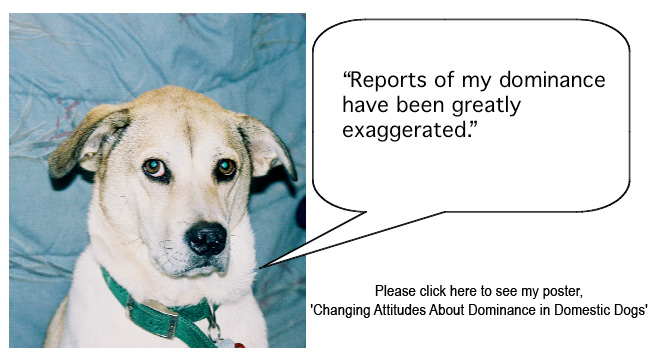Pet Collar Awareness

DID YOU KNOW?
Collar choices for pets are endless. They are the perfect place to hang identification and with a variety of colors and designs available to make a statement. However, the appeal, color and aesthetics of collars is not what plagues most pets. It is how they work. If the answer to how your collar works is by shocking, choking, pinching, inducing pain, fear and intimidation, then you've picked the wrong collar. Learn more here
start of pageeileenanddogs
We highly recommend Eileen Anderson’s page on shock collar training. The articles and videos presented are articulate and thorough. Her detailed analysis, research and explanations dispel the many myths and misconceptions surrounding shock products.
INFORMATION ABOUT SHOCK COLLARS HERE
 start of page
start of page
Positive Reinforcement is More Effective at Training Dogs than an Electronic Collar, Study Shows
Zazie Todd, PhD, Companion Animal Psychology, July 22, 2020
New research got professional dog trainers to train dogs who had issues with off-leash disobedience. Positive reinforcement worked better than an electronic collar, without the risks. Full article here.
start of pageACCORDING TO THE DICTIONARY, A WHISPERER IS SOMEONE WHO SPEAKS SOFTLY
by Silvia Jay, Voices for Dogs posted with permission Copyrighted 2008
The word whisperer implies someone thoughtful, mindful and tender.
Indeed, the Horse Whisperer Monty Roberts talks about gentling, partnership, trust and the willingness to follow; words mindful dog professionals use as well. The equipment Roberts designed and uses is mindful of the horse; like a buckle collar, body- or Sense-ation harness is stress free walking gear for the dog.
Although there are trainers who have that magical connection with dogs, I cringe each time when someone describes him/herself as a dog whisperer, because in reality many speak with the voice of doom.
Prong, shock, choke and choke type collars, the alpha roll and pin, intimidation, leash corrections on a short lead and attention pokes with foot or hand are anything but gentle, mindful or intended to get voluntary compliance. It is all about coercive control.
If you don't have your dog's voluntary attention, the best you can hope for is physical control and restraint, and that is exactly what most whisperers rely on – and teach.
Almost all behavior problems are rooted in fear and/or stress. Today, thanks to popular TV-shows, traditional, punitive alpha methods are disguised as whispering. Despite the gentle term, the methods aren't new, and increase insecurity, stress, confusion and conflict just as these methods always have. They lead to exactly what they try to prevent - a variety of behavior problems, including aggression. Click to read full article
start of page
Reproduced with permission www.clever-critters.com
Should Dog Collars Have Shocks or Prongs?
Study looks at stress behavior associated with different training methods.
The Bark, by JoAnna Lou, September 2014, Updated April 2022
It is important to choose the appropriate collar for your dog. Dog collars can cause physical and psychological harm to dogs if used incorrectly. Studies (like the one described below) show that some dog collars like prong, shock, and choke collars shouldn't be used at all. These collars cause pain and induce stress in dogs and ultimately aren’t as successful as a dog training tool. Dog collars can cause whiplash, fainting, spinal cord injuries, paralysis, crushing of the larynx, bruising of the esophagus, prolapsed eyeballs, and brain damage if used incorrectly.Full Article Here.
Why “Red Zone Dogs” Need Positive Reinforcement Training
Eileen Anderson, October 21, 2019
Aggressive, dangerous dogs (a.k.a. “Red Zone Dogs”) should be trained with positive reinforcement, desensitization, and counterconditioning. Here’s why.
Training with pain, startle, and intimidation carries huge risks. Decades of science tell us that aggression begets aggression. It’s that simple.” Full article here...
How to Find a Good Dog Day Care
Posted by Neena Pellegrini – The Seattle Times, July 19, 2012
Dr. L. David Mech talks about the terms "alpha" and "beta" wolves and why they are no longer scientifically accurate.
AVSAB - American Veterinary Society of Animal Behavior
These position statements of the American Veterinary Society of Animal Behavior (AVSAB) reflect the opinion of animal behavior professionals on a variety of topics including confrontational training.
start of pagePunishment, Puppies, and Science: Bringing Dog Training to Heel
UNDARK, Sept. 22, Francesco De Palma / EyeEm via Getty
In October last year, the American Veterinary Society of Animal Behavior, which includes both veterinarians and behaviorists with doctorate-level education in animal behavior, issued a statement: “There is no evidence that aversive training is necessary for dog training or behavior modification,” referencing 21 studies on the effectiveness of reward-based methods and risks of aversive methods. Alexandra Protopopova, an animal welfare researcher at The University of British Columbia, wrote in an email to Undark that the recent research cited by the statement reflected the “undeniable” risks of aversive techniques, adding: “Ultimately, recent research has also shown that aversive methods do not result in better trained dogs; thereby making traditional aversive dog training methods obsolete.” Full Article Here
Reality TV Training - The Pet Professional Guild
THE SHOCKING TRUTH - HOW THE MARKETING OF SHOCK COLLARS MISLEADS PET DOG OWNERS BY JAN CASEY
First published in Barks from The Guild, the official publication of The Pet Professional Guild, The Association for Force Free Pet Professionals

When we consider modern dog training methods, there are three areas which should be considered: the effect on the dog's physical well-being, the impact on the dog's mental health, and the ethics of using shock on an animal that must depend upon and trust us to fulfill its needs. The use of a shock collar is detrimental to the animal on all three levels.
Shock collars are marketed to pet owners and trainers for specific purposes including: "training" for obedience, recall, and hunting. Shock collars are also used for containment (electronic fences) both inside and outside, and to correct "problematic behavior such as barking as seen in the use of "bark-collars."
To read the full article and download an educational PDF then click here
start of pageShock Collars: What Manufacturers Don't Want You to Know
Copyright COAPE, 2015

We make no apologies for this article being one-sided – that is – against the use of e-collars for training dogs. Furthermore, we challenge anyone who feels that the information presented here is overly bias against e-collars to produce equally robust research supporting the benefits of these devices in everyday dog training.
For FULL ARTICLE CLICK HERE
start of pagePunishment Does Not Help - Psychology Today
Sabrina Poggiagliolmi, DVM, MS, DACVB April 2018
..."Shock collars (or invisible fences) do not solve any behavioral problem, they only suppress them. In fact, as soon as they are removed from the dogs’ necks, those dogs will show the same behavior they were supposed to stop. They do not work, they just hurt.”.... Full article here
start of pageWatch a man being trained to do a simple task, first with a clicker and M&M's, then with a e-collar!
Keep in mind this person gave permission, understood what was going to happen, is consulted about the level of shock being used and knew he could stop the experiment at any time. Options a dog, cat or horse doesn’t have.
start of pageThe American College of Veterinary Behaviorists
‘Positive' Dog Training is Not Always What It Seems - ACVB, Sept.1, 2018
Why falsely-advertised ‘positive reinforcement’ training can dog harm. Full article here
start of pageTHE ALPHA SYNDROME – ABOUT LEADERSHIP AND RANK ORDER IN DOGS
Published 2006 - 96 pages
"You are insufficient as a leader," "don't let the dog become the alfa individual," "show the dog who is in charge" – you probably have heard these words. But they are wrong!"
The leadership concept has been misunderstood and misused and this book goes through it from start to finish. Here you find the latest ethological findings and an intriguing theory about what lies behind status relations among pack living animals. In short: forget about leadership and concentrate instead upon your role as a trainer. No matter what people say – you can be as nice as you want to and spoil your dog. It doesn't see you as less a leader anyway.
start of pageABOUT HARNESSES
by Turid Rugaas
THE ETHICS OF SHOCK-COLLAR CONTAINMENT FENCES FOR DOGS AND CATS
The Association of Pet Behaviour Counsellors
May 10, 2011
Is it acceptable to use electric shocks to contain your pets?
Containment or invisible fences are currently being advertised in the UK and further afield, as an effective way of ensuring pets remain within a certain area e.g. a garden. Invisible fences are reputed to be more effective than conventional fencing for containing your pets, and give your pet freedom while keeping them safe too.
Sounds ideal! But let's look at what invisible fences actually are.
start of pagePositive Gun Dog Training
by FetchMasters
'Bringing sporting dog training into the 21st century'
...despite the proven effectiveness of positive training methods, gun dog training remains deeply entrenched in traditional, punishment-based training philosophies.
For a side by side comparison of Positive vs Traditional training Click Here
start of pageNot Using Force in Police Dog Training
by Deborah Palman, Maine Warden Service
Excerpt...Using positive training methods requires a change in thinking.
Trainers learn to focus on what the dog is doing right instead of what he is doing wrong. The conflict between handler and dog is eliminated, and the two become partners in learning instead of adversaries. The positive trainer learns to be patient and not be unduly worried by problems that arise, because he or she knows that they will be eliminated with time and more training. It is nearly stress free training, and the dog and handler find themselves much happier with training and life in general. Dogs suffer fewer injuries and sickness, and handlers feel better about not having to hurt their dogs to train them. Switching to non compulsive methods might even take a sort of personality change to escape the old power trip and “obedience” to the handler mentality created by compulsive training. I know that, for me, and certainly for my dogs, this change has been for the better.... Full Article Here
start of pageChoke, Prong/Pinch & Indeed Any Collar Increases Significantly The Risk Of Injury To Your Dog

Provided by banshockcollars.ca
When you jerk, snap, yank or pull your dog you most likely have no idea just how much force you are exerting, force that is adversely affecting your dog's health and well-being. Just like us, everything is connected and damage to the neck leads to problems in the back, limbs, head, eyes and organs. Studies and research on collar damage leave no doubt that the majority of dogs equipped with collars will sustain some form of injury. Not only physical injury but psychological damage as well. Aggressive behaviors in dogs can be a result of the pain they are experiencing. After all, chronic back or neck pain makes us cranky too. The constant 'corrections' can lead to further behavioral issues. Dogs jerked by collars and then crated are even more stressed as restricted movement leads to more pain, muscular tension and even aggression. Do not disregard it when a dog resists being crated.
For full article click here
Positive Gun Dog Training Workshop Photo Gallery
Djanick Michaud from Rimouski, Quebec, taught positive methods for training gundog for hunting and/or Hunt Test and or Working Certificate competition. The event was held in Rusagonis, near Fredericton, New Brunswick.
About the Presenter of the workshop
Djanick Michaud got the passion of the golden retriever breed in 1988 while studying in England. Back in Canada, he continued his studies at University in Communications-Psychology and also at the Master degree in Project management. Once “set in life”, he went back to his project of working with goldens. He started to work with his first dog in 1998 and built up his breeding program as well as his skills in training, first in obedience and after, in proper hunting for waterfowl and field hunting. He became a CKC judge in hunt tests and also ran several dogs in all levels of the discipline.
Djanick is the author of a guide book about retrievers and also the only training book about retrievers, putting together an entire path, starting from 2 months to two years old, to build a competent retriever for hunting. Currently these books are in French but the methodology book should be available in English sometime in 2015! His approach, based on motivational training and positive reinforcement, comes from European methodologies that have been used for decades across the Atlantic Ocean.
Passionate about his work, Djanick has the fire to pass on his knowledge so more and more people can discover training in a way that brings steady results as well as lots of pleasure in the relationship building between humans and dogs.
start of pageRethinking the Causes of Canine Aggression
Ellen M. Lindell VMD, DACVB
Veterinary Medicine
"Behaviorists have now come to realize that the term dominance-related aggression is not only simplistic but is often inaccurate." Full article here
start of pageIs Punishment an Effective Way to Change the Behaviour of Dogs?
Stanley Coren Phd., DSc, FRSC
May 24, 2012
"Probably the hottest continuing controversy among dog experts has to do with the use of punishment in dog training. Although positive dog training techniques have become widespread, "discipline"-based training using physical force has become more common because of certain popular television shows that feature it, and a number of dog training books which advocate it"... Full article here on Psychology Today
start of pageSHOCK COLLARS – THE UGLY TRUTH
by Valerie Barry, Professional Dog Trainer, North Vancouver
From the perspective of a competent and knowledgeable dog trainer, training with shock collars is one of the worst methods ever introduced as “training” that continues to persist with alarming intensity.

Shock collars are marketed to unsuspecting pet dog owners as a “quick fix” for serious behavioural issues as well as a fast way to “train” your dog. The perception seems to be that if you’ve tried everything else and nothing worked, this will fix your problem. Or if you have a big or “difficult” breed, you need some serious equipment to “control” or “dominate” them. Nothing could be further from the truth, and this whole way of thinking is inaccurate and dangerous. We have come leaps and bounds along the road in understanding dogs – how they think and how they learn – in the past 15 or so years. Science has clearly proven that punishment based methods of training like shock collars (prong collars, choke collars, drowning, choking, dominating, correcting, etc.) do not work as “training” and have some very serious side effects.
If science doesn’t interest you, how about results? Again, it’s been researched, tested, proven and documented that positive reinforcement training is faster, more efficient, and has longer term retention – something punishment methods cannot accurately claim. Better yet, positive reinforcement promotes good mental health for your dog – it allows them to think, puzzle out solutions, safely offer various behaviours as options, gain confidence and create desirable end behaviours that are happily performed and last a lifetime. Confidence is an important skill for dogs - isn’t that true for all of us? A confident dog knows what is expected of him in all the circumstances that are important to you and he will perform his skills reliably. Problem behaviours can be extinguished (or prevented from ever occurring) and new behaviours can take their place.
Punishment, by definition, suppresses behaviour. Shock collars are punishment. Therefore, shock collars do not eliminate behaviour – they suppress it – very big difference. Behaviours that are suppressed are still there and they are still getting reinforced because the things that cause them are still there too. If the punishment that is causing the behaviours to be suppressed is removed (you’re not holding the remote), temporarily unavailable (batteries are dead) or inexpertly applied (some small child gets hold of the remote and starts zapping away) - what do you think might happen? The scary part is that you never really know – think about that statement: “you never really know what’s going to happen” - whew. You might get lucky and nothing happens or you might not be so lucky. Of course, society also finds it horrifically easy to “get rid” of “bad” dogs when things go horribly wrong and simply start again with another one - how sad, how inexcusable and how irresponsible. How easily preventable.
Full Article Here
Electronic Pet Fences: What You Need to Know
Squidoo
Electronic fences, e-fences, invisible fences, pet containment fences, they all amount to the same thing. A system where your dog wears a radio controlled electronic collar that shocks him whenever he crosses a certain perimeter, sometimes marked (at least at first) with little flags. If you are considering this kind of fence, there are some things you need to know …. link to squidoo article here.
start of page
Electric fences are not humane, not safe, and by no stretch of the imagination a reliable barrier.
Often people selling shock collars & shock fences leave customers full of misleading, but more importantly, gross omissions about their safety. ‘Protection' & 'safe' are words used by the manufacturers to describe a product that scientific studies and animal behaviourists affirm can cause physical and psychological harm. The claim that an electronic fence offers a “stress- free environment” belies the fact that the shocks delivered by the collars are not just a ‘tap’ or ‘tingle’ but painful and scary. Shocked cats and dogs are stressed cats and dogs. Full Piece Here
start of pageTRAIN WITHOUT PAIN OR FEAR
by Alice Fisher CPDT-KA
DOGSmart Training Systems Ltd.
The choice of training without inflicting pain or fear on another being waS a conscious decision by DOGSmart. We had to actively seek out alternatives by getting an education in how dogs learn. (Burch, Bailey)The pleasure centre in the brain has to be activated for dogs to learn. Lure/Reward training (Dunbar) and Clicker training (Skinner, Pryor) are 2 types of positive reinforcement training that are not based on fear or punishment.
People have been told that they need to train by physically dominating and "correcting" a dog through physical punishment. They may use their hand, a leash, a choke chain, a pinch collar, e- collar/shock collar or even a head halter, harness or plain collar. Any tool can be punishing. Using physical punishment can be detrimental to the physical and mental health of any being.
Full Article Here
KAREN OVERALL, VMD, PHD, DIPLOMATE ACVB ABRIONLINE.ORG
Karen L. Overall is a Diplomate of the American College of Veterinary Behavior (ACVB) and is certified by the Animal Behavior Society (ABS) as an Applied Animal Behaviorist.
An open letter from Dr Karen Overall Regarding the use of shock collars.
Tue Dec 6, 2005
No, I have not changed my opinion and it is that there is never any reason for pets to be shocked as a part of therapy or treatment. If anything, I have strengthened this opinion. There are now terrific scientific and research data that show the harm that shock collars can do behaviorally. At the July 2005 International Veterinary Behavior Meeting, held in conjunction with the AVSAB and ACVB research meetings, data were presented by E. Schalke, J. Stichnoth, and R. Jones-Baade that documented these damaging effects (Stress symptoms caused by the use of electric training collars on dogs (Canis familiaris) in everyday life situations. Current Issues and Research in Veterinary Behavioral Medicine, Papers presented at the 5th Int'l IVBM. Purdue University Press, 2005:139-145. [ISBN 987-1-55752-409-5; 1-558753-409- 8]).
This follows on the excellent work done by Dutch researchers, in cooperation with their working dog groups and trainers, that showed that working / patrol dogs were adversely affected by their 'training' with shock, long after the shock occurred (Schilder MBH, van der Borg JAM. Training dogs with the help of the shock collar: short and long term behavioural effects. Applied Animal Behaviour Science 2003;85:319-334).
Research meetings can be attended by anyone paying the fee, and most published work is available either in the public domain, from an organization, or from someone with a university library connection.
There is no longer a reason for people to remain misinformed. Let me make my opinion perfectly clear: Shock is not training - in the vast majority of cases it meets the criteria for abuse. In my patient population, dogs who have been 'treated' with shock have a much higher risk of an undesirable outcome (e.g., euthanasia) than dogs not subjected to shock, and I never recommend euthanasia. In all situations where shock has been used there is some damage done, even if we cannot easily see it. No pet owner needs to use this technique to achieve their goal. Dogs who cease to exhibit a problem behavior usually also cease to exhibit normal behaviors. The only data available support the idea that shock is neither an effective nor suitable training tool.
That said, it's time we replaced everyone's personal mythologies and opinions with data and scientific thinking. Such opportunities are now available, but are often not exploited.
For example, the statement: " Major veterinary universities have tested E- collars since the mid 60's when they were invented. No evidence of any damage, Physiological or psychological has ever been found." is patently and wholly false. For the evidence re: data - see above. As for the initial statement - it's WRONG. It's a MYTH. The specialty college (ACVB) even conducted a census a few years ago to see if we could find ANY truth to this and there was NONE. We couldn't get anyone to say that they had - or knew someone who had - participated in such tests and studies. This pattern of behavioral repetition is representative of the danger of myth, and also of the power of the scientific method. Science tells you when you are wrong. Myth allows you to steal credibility where none is earned. That particular myth has damaged universities too long, and it has traded on the reputations of people who neither endorsed that decision, nor supported the finding, and it must stop.
I hope this helps. I have never thought we could get via electricity what we couldn't get by advanced training and hard work.
Karen L. Overall, MA,VMD, PhD
Diplomate ACVB
ABS Certified Applied Animal Behaviorist
Center for Neurobiology and Behavior
Psychiatry Department
University of Pennsylvania School of Medicine
BARKING
Never Forget, Barking is Normal Healthy Canine Behaviour!
Barking is communication. It is imperative you listen to the message. If this seems unreasonable to you, it may not be the right time for pet ownership. It takes a great deal of time & energy to adequately care for and allow a dog the freedom to be a dog. Dogs bark for reasons. Understanding why a dog is barking is crucial to solving the problem, if indeed there is a problem. Full Article Here
start of pageCHOOSING AN EFFECTIVE AND HUMANE COLLAR
Victoria Stillwell
LOOKING FOR A DOG TRAINER - HSUS WARNS BEWARE OF ABUSIVE TRAINING METHODS
THE HUMANE SOCIETY OF THE UNITED STATES WARNS:
BEWARE OF ABUSIVE TRAINING METHODS
January 9, 2007
WASHINGTON -- Dog owners often seek professional advice when it comes to training their animal companion and there are many options available. From DVDs, books and television programs, to local dog trainers offering private lessons and group classes, consumers have choices about the methods and styles in which they want to raise their pup.
Are you supposed to be your dog's parent or pack leader? Do you want your dog to be an obedience champ or do you just need him to stop jumping on strangers? What are the boundaries you want set?
According to Stephanie Shain, director of outreach for companion animals for The HSUS, "Just like with human communications and psychology, there are varied philosophies, methods and approaches when it comes to communicating with your dog. It is important to define your goals and find a system that works best – and safely -- for you. Unfortunately, we know of many cases in which a private trainer's methods were abusive and the animal was injured or killed." Shain warns that if people do choose to work with a trainer, they must be sure that the trainer's methods are safe. The HSUS offers these tips to help ensure that your dog is trained safely and successfully, as well as the red flags that may signal abusive training.
Red Flags: Read more here.
start of pageAre Board and Train Programs a Solution to Your Training Problems?
By Stephanie Gibeault, MSc, CPDT
Nov 09, 2021
Are you struggling to train your dog? Perhaps you have an unruly puppy who is peeing in the house. Or maybe you have an older dog who jumps on you when you come home. Your dog’s issues might even be more serious, such as reactivity. There’s no doubt you could benefit from professional help, but is board and train the solution? Learn more about board and train and why it might not be all that it seems. Full article here
start of pageBefore You Board
'BeforeYou Board’, please read this https://www.banshockcollars.ca/pdf/Boarding-Outline-and-Agreement-Form.pdf
start of pageBCSPCA - UNDERSTANDING CANINE BEHAVIOR
Sept 9, 2009
Preventing or Reducing Behaviour Problems
UNDERSTANDING CANINE BEHAVIOUR
Preventing or reducing behaviour problems ensures that you and your dog will have a satisfying relationship rather than a life full of anxiety, worries and frustration. First you must understand that some dogs are more prone to certain behaviour problems because of their temperament and have learned to respond a certain way to various situations. While you can help most dogs be behaviourally healthy and well-mannered, in some cases you may need the help of a qualified behaviourist, trainer or veterinarian. Read more here.
start of pageHOW TO FIT & USE CHOKE CHAINS IN DOG TRAINING
How To Really Click with People, Horses or Lions
Most Equestrian Coaches Don't Understand Training
Horse Science News
start of pagePETA
PRONG AND SHOCK COLLARS AND ELECTRIC ("INVISIBLE") FENCES
Cruel "training" devices such as anti-barking shock collars, electric ("invisible") fences, and prong collars rely on painful punishment and negative reinforcement. They cause dogs to live in fear of being electrically shocked or painfully choked for normal behavior such as crossing invisible lines, barking, jumping onto surfaces within their own homes, and getting ahead of their guardians during walks. Positive training methods, in which dogs are rewarded for desirable behavior, are kinder and more effective.
Shock Collars
Shock collars can cause dogs physical pain, injury (ranging from burns to cardiac fibrillation), and psychological stress, including severe anxiety and displaced aggression. Individual animals vary in their temperaments and pain thresholds; a shock that seems mild to one dog might be severe to another. The anxiety and confusion caused by repeated shocks can lead to changes in a dog's heart and respiration rate or gastrointestinal disorders. Electronic collars can also malfunction, either administering no shocks at all or nonstop shocks.
Electric ("Invisible") Fences
Dogs whose yards are surrounded by electric fences may develop fear or aggression aimed at what they believe is the source of the shock (kids riding by on bikes, the mail carrier, the dog next door, etc.). Dogs have been known to run through electric fences when frightened by fireworks or chasing a squirrel and then be too scared to cross back through the barrier.
Electric fences may actually encourage animals to try to escape. Since dogs only suffer painful shocks in the yard, they might associate the shock with the yard itself once they get out of the yard, the pain goes away. The fact that the pain returns when they try to re-enter the yard can cause dogs to believe that they are being punished for returning home.
Even when animals are successfully confined to the yard with an electric fence, they are still in danger of attacks by roaming dogs, cruel humans, or other animals who can freely enter the property. Electric fences are a dog thief's dream come true!
Prong Collars
Prong and choke collars can do much more damage than just yanking and choking a dog. Depending on the size of the dog, how hard the dog pulls, and how forcefully the person holding the leash yanks, choke collars can cause serious injuries, including the following:
- Intervertebral disc protrusion
- Partial or complete fore- or hind-limb paralysis from spinal cord injuries
- Damage to the vagus nerve, affecting the function of major organs, including the heart, lungs, liver, bladder, spleen, and kidneys
- A crushed trachea, with partial or complete asphyxiation
- Crushed or fractured bones in the larynx
- A bruised esophagus
- Sharp increases in pressure inside the head, which can cause brain or eye damage and sometimes prolapse of the eye
- Bruising and damage to the skin and tissues in the neck, resulting in the formation of scar tissue
- Fainting
Dogs who are repeatedly yanked and choked may become resentful, aggressive, and fearful of hands.
Real fences and positive training methods, in which dogs are rewarded for good behavior, are kinder and more effective. Read about some dog-training tips that will help dogs, not hurt them.
start of page

